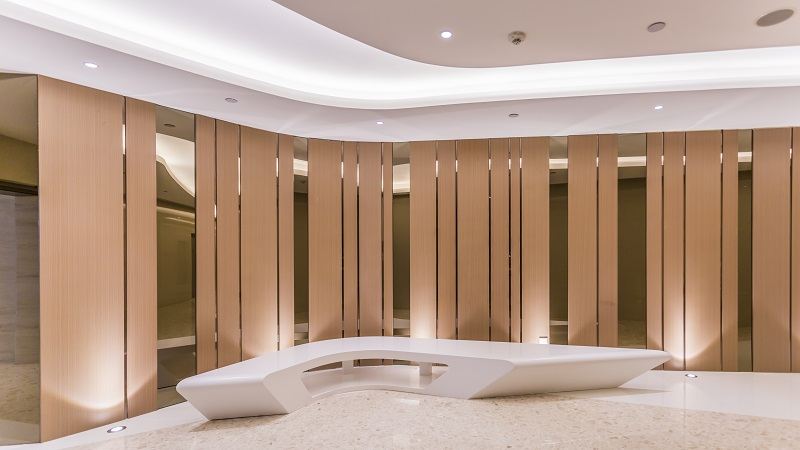Office design has evolved far beyond simple desks and chairs. In modern workplaces, the environment plays a direct role in employee productivity, collaboration, and overall brand identity. Among the many innovations in interior design, wall panels have emerged as a versatile solution that combines aesthetics, functionality, and efficiency. From acoustic performance to branding opportunities, these panels are transforming how offices and commercial spaces are designed.
This article explores the role of innovative wall paneling, the different types available, their benefits, and how businesses can integrate them into their spaces for maximum impact.
Why Design Matters in Office and Commercial Spaces
Workplace design is not just about looks—it directly affects performance and well-being. Studies show that an attractive and comfortable environment can boost creativity, reduce stress, and even influence how clients perceive a company. A well-planned space conveys professionalism, culture, and attention to detail.
That’s where innovative design elements, like wall coverings, flooring solutions, and lighting, come into play. Among these, wall panels stand out as one of the most practical and impactful design features.
The Rise of Innovative Wall Solutions
Traditionally, walls were treated as static surfaces meant for paint, plaster, or wallpaper. Today, the demand for multipurpose and visually striking interiors has shifted attention toward more dynamic alternatives. Wall systems now serve several purposes at once:
- Enhancing acoustics in busy work areas
- Acting as a medium for branding and storytelling
- Improving energy efficiency with insulation properties
- Offering durable surfaces that require minimal maintenance
In this context, wall panels provide the flexibility businesses need to balance functionality with visual appeal.
Types of Wall Panels for Modern Workspaces
1. Acoustic Wall Panels
Noise is a major challenge in open-plan offices and commercial environments. Acoustic panels help absorb sound, reduce echoes, and create quieter zones without compromising style. These panels are often made from fabric, foam, or composite materials and can double as decorative features.
2. Wooden Wall Panels
Wood has always been associated with warmth, elegance, and timeless appeal. In offices, wooden panels create a sophisticated atmosphere, making them popular for conference rooms, executive cabins, and reception areas.
3. Glass Wall Panels
Glass partitions and panels add transparency and openness to work environments. They allow natural light to flow through, enhancing the sense of space while maintaining separation between areas. Frosted or tinted glass can also provide privacy.
4. 3D Wall Panels
For businesses looking to make a bold statement, 3D panels add texture and depth to walls. These innovative surfaces can be customized in various designs, making them ideal for branding or creating focal points in lobbies.
5. Metal and Composite Panels
Durable, sleek, and modern, metal panels are often used in commercial settings that prioritize strength and minimal maintenance. They are suitable for high-traffic areas like corridors, cafeterias, or retail showrooms.
Benefits of Using Wall Panels in Offices
1. Enhanced Aesthetics
Wall panels transform plain walls into engaging surfaces. Whether it’s a textured finish, wood grain, or sleek metallic shine, they help establish a company’s visual identity.
2. Acoustic Comfort
Open spaces with high ceilings often struggle with noise issues. Acoustic wall panels make these environments more comfortable by reducing distractions and supporting productivity.
3. Flexibility in Design
Panels come in a variety of styles, materials, and finishes, giving designers the flexibility to align with company branding. Logos, colors, and unique patterns can easily be incorporated.
4. Durability and Easy Maintenance
Compared to painted or wallpapered walls, panels resist scratches, stains, and moisture better. Many are designed for easy cleaning, making them ideal for commercial use.
5. Energy Efficiency
Some wall systems provide insulation, helping regulate indoor temperature and lowering energy costs in large buildings.
Role of Wall Panels in Branding and Identity
In offices and commercial spaces, every design choice communicates something about the organization. Reception areas with bold, textured panels create an immediate impression on clients. Branded graphics printed onto panels reinforce identity and values. Even subtle design choices, like the use of natural wood finishes, can reflect a company’s commitment to sustainability.
By integrating these elements strategically, businesses can align their physical environment with their mission and culture.
Applications Across Different Commercial Spaces
Corporate Offices
Wall panels are commonly used in meeting rooms, reception areas, and collaborative spaces. They add sophistication while ensuring comfort through noise control.
Retail Stores
For retail businesses, panels double as display surfaces and backdrops for merchandise. 3D designs and bold colors can attract attention and enhance the customer experience.
Restaurants and Cafés
In hospitality, the right paneling creates ambiance. Acoustic solutions make dining more comfortable, while textured finishes enhance the overall aesthetic.
Healthcare Facilities
Hospitals and clinics benefit from hygienic, easy-to-clean panels. Bright finishes and calming textures can also improve patient comfort.
Educational Institutions
Schools, colleges, and training centers use durable panels for functional, long-lasting walls that can withstand heavy use while maintaining a professional look.
Trends in Innovative Wall Panels
Sustainable Materials
Eco-friendly options, such as bamboo, reclaimed wood, and recycled composites, are gaining popularity. They align with corporate responsibility goals and appeal to environmentally conscious clients.
Smart Integration
Some panels are being designed with built-in technology—such as integrated lighting, writable surfaces, or digital displays. These innovations merge practicality with design.
Modular Systems
Businesses increasingly prefer modular wall panels that can be reconfigured as needs change. This flexibility supports dynamic office layouts and evolving work environments.
Bold Colors and Patterns
Neutral tones are being replaced by vibrant, eye-catching designs that express creativity and brand personality.
Guidelines for Choosing the Right Wall Panels
- Assess Your Needs – Determine whether the priority is acoustics, aesthetics, durability, or all three.
- Match the Brand Identity – Choose finishes and designs that reflect company culture and values.
- Consider Maintenance – Select materials that are easy to clean and suitable for long-term use.
- Plan for Flexibility – Modular and customizable panels allow the workspace to adapt over time.
- Budget Wisely – Balance cost with value; investing in durable and functional solutions pays off in the long run.
Installation and Maintenance Considerations
Installing panels is generally straightforward, but it’s important to use professional installers for a seamless finish. Proper alignment ensures both functionality and aesthetic appeal. Once installed, maintenance usually involves simple cleaning with mild solutions. Regular inspections help identify any wear and tear early.
For businesses in high-traffic industries, selecting panels designed for durability will minimize long-term costs.
The Future of Wall Design in Commercial Spaces
As technology and design continue to converge, wall systems will evolve further. Smart panels that integrate sensors, interactive displays, or adaptive lighting could soon become the standard in offices and retail environments. Sustainability will also remain a driving force, with an increasing demand for recycled and low-impact materials.
Wall panels will continue to balance function and creativity, shaping workplaces that inspire productivity, reflect brand identity, and offer long-lasting value.
Conclusion
Modern offices and commercial spaces are no longer just places to work or conduct business; they are environments that influence performance, collaboration, and perception. Innovative wall panels provide solutions that enhance aesthetics, control acoustics, and support branding, all while offering durability and flexibility.
By carefully selecting the right materials, styles, and applications, businesses can create spaces that not only meet practical needs but also inspire employees and impress clients. As trends move toward sustainability and technology integration, wall paneling will remain at the forefront of office and commercial design innovation.

